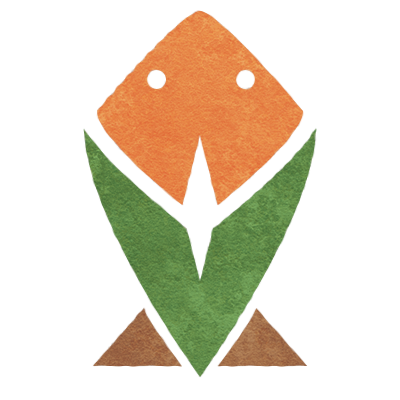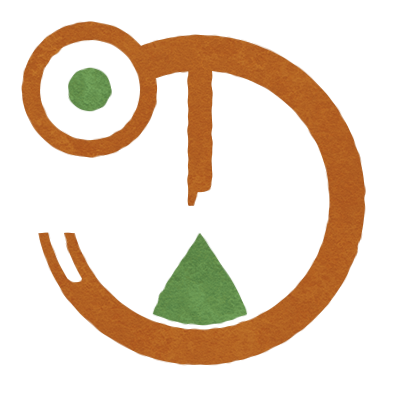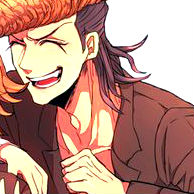Helping others is always a choice, and that choice is always one to be proud of.— A Kouxat priest
The Kouxat are a people who wish to keep the world turning through selfless acts of kindness, dedication to their gods, and mental clarity— but all of this must be by choice. Like blood, one's time, care, and understanding are most meaningful when given willingly.
For information on physical forms, read,
A Bloody History
The earliest histories of the Kouxat have been lost, effaced by conquerers from Choutl
?— a neighboring city-state. The conquered Kouxat were forced to erase their records, deface their monuments, pay tribute in the form of goods and slaves, and abandon their faith for that of their new rulers. Naturally, the Kouxat detested the rule of Choutl— and made numerous attempts to revolt, with little success. That is until
she arrived.
Depending on the account, she was a either a native-born Kouxat, a child born from a tree in place of fruit, or descended from the stars— all refer to the same person, however— Yilchet Tiqon,
? commonly referred to as the Tichepluezet
?— or
Blood Sovereign. She herself was a slave, taken at a young age by Choutl, but she dedicated herself to her faith, practicing in seclusion whenever she could, praying to the gods for her people's freedom. She was caught time and time again by her masters, who punished believers of the old faith by burning their faces, ears, and scalps with hot coals— this was believed to clear the mind of "falsities."
The woman's head and face were covered with scar tissue by the time she entered adulthood. And yet, she remained devout.
One day her prayers were finally answered, by one of her gods—
Tuizotetikli,
? who would grant the woman the power needed to free her people, with one condition. She had to consume the hearts of her fellow slaves. Through her, their souls would live on— and their deaths would not be in vain. Unwavering in her faith, Yilchet prayed for forgiveness before she began to sacrifice her comrades, one by one, over the next year. Through this time, Tuizotetikli would teach her how to utilize her growing power. After fifty of her kin's hearts had been devoured, it was finally time. In a tremendous display of power, she tore down her cage, and walked to Choutl's palace. Each guard that stood in her way found themselves impaled by their own weapons— as if the objects acted of their own will. Upon reaching the palace, Yilchet yelled out.
We are free! We are free!
The gods you removed sweat with anger, and I am their feet, come to stamp your power from this land.
— Yilchet Tiqon
A mighty shaking struck down the palace and the
tichan inside, before they could escape. Choutl was thrown into disarray without their ruler, and with Yilchet ravaging the city and freeing its slaves, its fortifications were further weakened. Within the following months, others subjugated by the city-state were finally able to overthrow their rulers.
Yilchet was soon after crowned as their new ruler, taking the name Tichepluezet. She was told that the other gods had died from the long lack of worship, and for Tuizotetikli to maintain enough power to fulfill their roles, continuous sacrifices would be necessary. Even after Tichepluezet's death, traditions of sacrifice and bloodletting would continue, as priests and rulers alike believed it to maintain the very world around them. Tichepluezet was believed to join Tuizotekikli in godhood, watching and guiding her people still alongside the first god, through a sacred pool of blood known as the Tnoutzet
? with which the rulers of Chlotoun commune to this day.
For a more descriptive history, read,
Tradition & Values
The Kouxat value agency in all aspects of life. Whether they are showing kindness, love, strength, or seeking knowledge— everything a person does is made all the more meaningful if they
chose to do so. Selflessness is especially respected, faithful followers of the
Tuepluezet? faith venerate
laktou— a title given to holy figures, many of whom have performed great acts of selflessness.
Many Kouxat believe that one cannot truly make good decisions unless they retain clarity of their place in the world. They are not gods to be worshipped, but they are not worthless either— one's place lay somewhere in-between. The Kouxat work to remember that each person is an individual with their own wants and needs, but one that lives within a wider community that has its
own wants and needs. It is unwise to neglect one for the other, as this is believed to cause much strife.
Common Values
- We greatly value individual agency.
- We value selflessness.
- We value calm and mental clarity.
- We value dedication by choice.
- We believe blood is the very essence of life.
- We believe bloodletting grants clarity and calm.
- We believe blood must be spilled with purpose.
- We believe all good deeds are worthwhile.
Counter Values
- We believe some choices must be forced.
- We value self-preservation.
- We value excitement and confusion.
- We value dedication, in all forms.
- We believe water is the very essence of life.
- We believe self-harm is never worthwhile.
- We have no qualms spilling blood.
- We believe few good deeds are worthwhile.
Taboos
While bloodletting is a common practice, it is seen as not only rude but
insulting for one to show off the resulting scars. One should not brag about their bloodletting habits, what they do to gain clarity is between them and the gods alone— no one else. Many take care to draw blood only from areas that are covered by their clothing, and even those that draw often from their palms are wont to wear gloves or wrappings to cover them. If these scars are seen by happenstance, the incident is disregarded— however, if one were to "accidentally" reveal such scars on a frequent basis, they would be met with less than favorable responses.
Milestones
Birth
When a child is born, both parents will cut their palms and hover their closed fists above the baby's head, allowing blood to drip onto them. It is believed that doing so places the child under the protection of the gods, and transfers the strength and wishes of the parents to the child.
Coming of Age
Once a Kouxat child has passed the age of 15, they may tell their parents that they believe they have become an adult whenever they're ready. This may be immediate, but many take years until they feel as if they've grown enough to be considered adults. Once one has decided this, a date will be set— upon which their loved ones will gather for a ceremony known as the
Louchlec where the child will tell the story of a laktou of their choice. As these stories are passed down orally by Tuepluezet priests, there is no exact verbiage to recite. Instead, the child is free to tell the story in any manner they wish— so long as they remain faithful to the general events.
After this, everyone enjoys a hearty feast, and some present the new adult with gifts. On rare occasion, there are those who
never undergo this ceremony, as they never feel quite ready for adulthood.
I shall never have my Louchlec, so that I may die a child.
— An aged man
Death
When a Kouxat dies, a local priest will take their body and drain it completely of blood. This blood is collected, and mixed with clay to create two pots— one to bury the body inside, and another, smaller pot to be given to their loved ones. It is believed that doing this reunites the soul with the earth it came from, and for the grieving loved ones, the smaller pot serves as a way to retain some of their spirit in the living world.
Pastimes
A common game played by the Kouxat is that of Messengers. Messengers is played by two or more players, on a board with one or more lanes separated into eight sections each. One player will take the role of storyteller, while the rest will play as messengers— who have to deliver a message to someone far away. Each player is given a token, and will take turns attempting to move their token forward on their lanes. Whenever one tries to do so, the storyteller presents them with a situation and a choice— depending on the choice the messenger makes, they will either move forward, remain still, fall back, or gain some benefit for the future. Whoever manages to get their messenger to the end of their lane first, wins.
This game is heavily roleplay focused, and so it requires a lot of choice and imagination from those playing. Choices and scenarios can differ greatly depending on the storyteller in charge, some may offer more interesting, varied choices that could require messengers to purposefully skip turns, or even move backwards— while others may only give simple binary ones. Some even decide to change the story behind Messengers entirely, framing the players as monster hunters, warriors, or people fleeing danger.
Miscellenous Traditions
Greetings & Farewells
When greeting someone, a Kouxat will raise a hand and say "yah!" The volume and enthusiam behind this utterance tends to denote the relationship between the greeter and the greetee. A flat, monotone "yah" is often used for strangers, while a full throated "YAH!" is not uncommon for loved ones. Farewells are executed by raising a hand in the same manner, but without any vocalization.
Eating
When it comes to mealtime, many Kouxat cook and share food with one another. Be it friends, family, neighbors, or co-workers— many take time to give to others simply because they wish to show some goodwill. It is not considered rude to decline offered food, either. After all, agency is important to the Kouxat.
War
Before battle, Kouxat warriors will engage in ritual bloodletting in order to calm their minds and steel their bodies for the greater pains they may be about to endure. They will then dip the ends of their weapons into their spilled blood in order to invoke the blessings of the gods, so that their weapons may strike true.
Naming
It is believed that children should have a choice in their own names, and so, Kouxat children do not receive any until they are old enough to speak— and choose their own. Last names are chosen in the same manner and are typically just appended first names, though some choose to combine two first names to create their last— akin to how other cultures carry their family names. The Kouxat, however, do not have family names at all, these last names simply serve as an easier way to identify an individual.
Common Masculine Names: Malekliz, Locuzi, Xotin, Tiheki, Omecho, Tecuitli, Zilo, Zlapkli
Common Feminine Names: Cipacac, Cuixo, Qilouchi, Cipa, Klio, Lileca, Aklekio, Ipal
Common Neutral Names: Te, Qil, Cuzoli, Azoy, Kalcul, Oqui, Ponal, Kipan
Ideals, Love, & Gender
Relationships
As the Kouxat greatly value agency in all things, there are no expectations for how one approaches relationships— or who they choose. As a result, most Kouxat engage with multiple partners as they see fit. The closest one can get to marriage in their society is through a private blood-mixing ritual, in which both parties draw and mix their blood. These rituals are generally kept between the involved parties, and seldom heard of by others.
Couples that wish to make their pairing known will mark one another with matching piercings on the sides of their necks. The materials and shapes of these piercings vary from couple to couple, one may be made of large jade spears, while another set may be small bronze spirals.
Beauty
The agency of the Kouxat extends to beauty standards, and while there may be common preferences— such as those with shorter hair— many choose to explore a wide variety of hairstyles, makeup, and other ways to present themselves. A few common haircuts include shaved sides with a short center, ponytails wound around a circular disc behind the head, and short hair with long, flat-cut bangs.
There are many approaches to makeup, though most tend to focus on the eyes. Red is an especially common color, as well, invoking the image of blood. Common designs include upturned half circles over the eyes, accentuated blood veins on the cheeks or forearms, and painted bottom lips.
Gender
The Kouxat care little for the concept of gender, and disintguish little between them. One has the agency to dress and present themselves however they wish, and few will question them for it.
Art, Architecture, & Dress
Art
Abstract art is quite common among the Kouxat, and comes in many forms— though most commonly in pottery. Potters spin or carve ceramics into geometric forms of varying practical use. Some make a point in making unusable ceramics, while others prefer to find unique forms that also offer practical purpose at the same time— both approaches are equally valued. Some, even, choose to create pots in the forms of existing animals, monsters, people, plants, and more.
Some carve or paint tales onto the surfaces of their work, some only use geometric patterns, while others keep their work plain and minimalist. One thing all Kouxat potters share in common, however, is the way that they mark their work— with thumbprints of their own blood. Given their freedom from expectation, and frequent experimentation, Kouxat potters are often the first to discover new techniques and approaches to earthenware. As a result, their work is highly valued across the world— and their skill is nigh unmatched.
Architecture
The average Kouxat home can take a wide variety of shapes, though most tend to be built from
lacipex wood.
? One home may be a simple cube, while another may be a multi-storied maze of rooms and hallways built over generations. Families tend to pass their homes down from generation to generation, with each housing anywhere from one individual to multiple families. One can choose who they wish to live with, and may strike it out on their own, live with family, with partners, friends, or even strangers if they get along.
Roofs are typically thatched, but it is not entirely uncommon to find homes topped with ceramic tiling arranged in a uniform, shallow angle. Both are often red, however, to mask any staining from the blood-red rain of the region.
Every home contains at least one bloodletting shrine, in a quiet room. Said shrines typically consist of a square lacipex mat, a candle lit and placed at each corner, and a ritual obsidian knife. Mats can be no more than simple planks, or custom built with complex carvings upon their surfaces. The faithful will spend anywhere from ten minutes, to upwards of ten hours bloodletting— depending on what clouds their mind.
Dress
While there is a great variety of clothing worn by the Kouxat, for convenience, most wear one-piece robes known as pexiloux.
? These robes are split into two sections at the bottom, which flare out at each side. To don a pexiloux, one must first pull their head through the hole at the top, then wrap the front of the garment between their legs and back over their shoulders, so that the two split sides hang down their front. Following this, one takes the flared sections at the bottom of each side, and ties them behind their waist— so that the flares create a "skirt."
Pexiloux are typically red in color— to avoid staining in the rain. Bolder persons, or those with more money, will have patterned pexiloux with oranges, pinks, and yellows. To further personalize their dress, many Kouxat introduce strips of colored cloth that are tied and woven around their pexiloux, typically along the front. The size, shape, and knotting of these varies wildly from person to person.
Following this, many wrap their feet in leather, or simply don sandals. For further expression, many introduce jewelry to their outfits. Most of this tends to be made from lacipex wood— resulting in beaded necklaces, bracelets, anklets, hair clips, and more. Even the wealthy tend to prefer the wooden jewelery, as the blood-red wood has religious significance for the Kouxat.
Religion & Myth
Most Kouxat are believers of the Tuepluezet faith, which worships a pantheon of gods— most of whom are now believed to be dead, leaving but two in their place. These two require the sacrifice of human blood in order to make up for gap left by the deceased deities. Without this sacrifice, they might not manage to fulfill their duties and ensure that the world continues to live.
Lacipex trees hold significance within the faith. As lacipex trees appear to be made of blood— they are inherently holy. Many believe that lacipex trees contain the blood of Qet itself, while others claim that the trees collect the blood spilt by the faithful and act as monuments to their faith.
Monstrous blood
Many Kouxat believe that the world's
monsters are creatures created by wasted blood. Blood should never be spilled without purpose, as its latent power will surely give birth to more of these fearsome predators.
Always ask, why do you bleed?
— Common Kouxat saying







Always love the sheer amount of detail you put into literally everything, Timepool.
Thank you! Sometimes I question if I should so it's nice that others appreciate it!